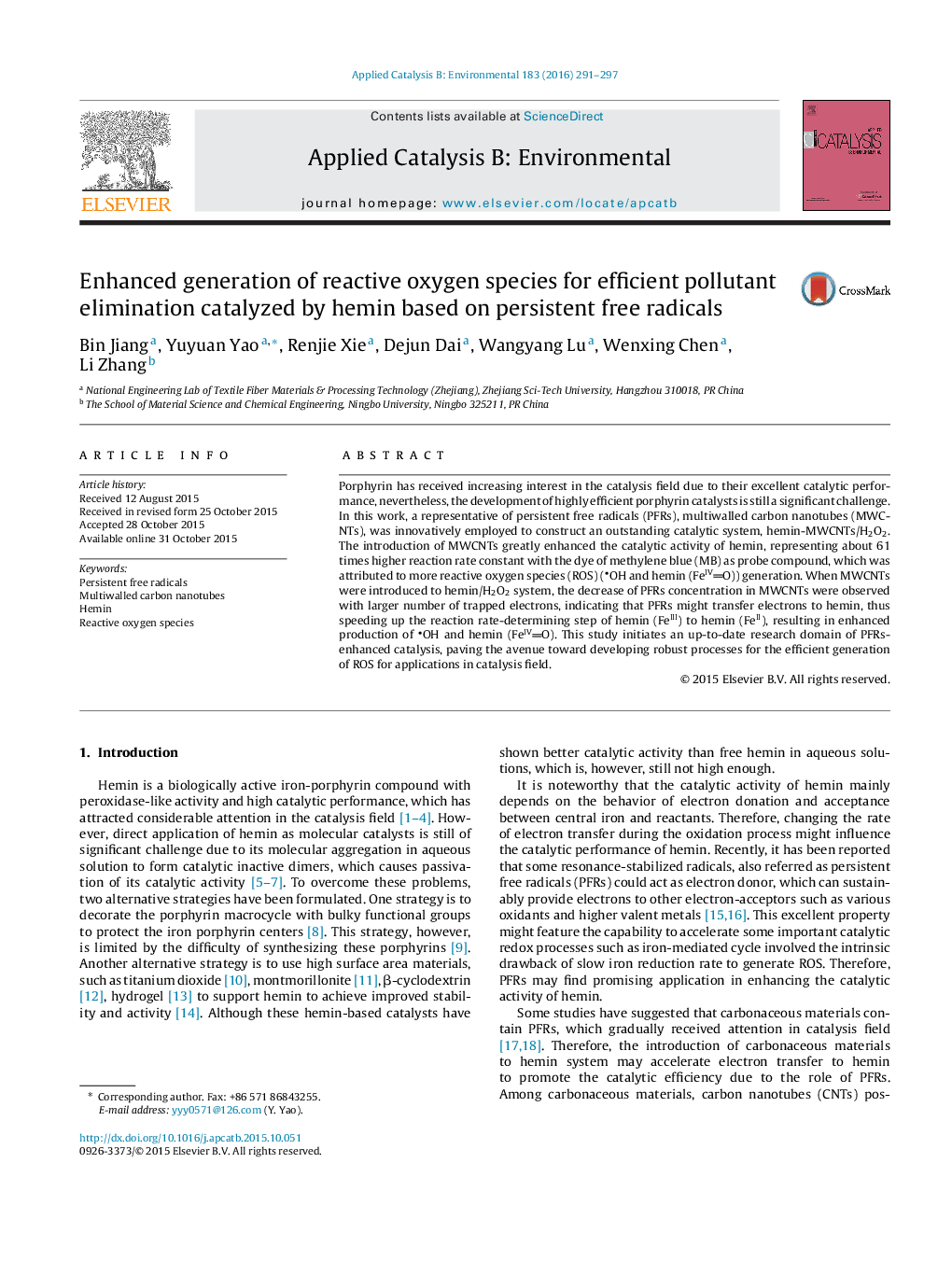| کد مقاله | کد نشریه | سال انتشار | مقاله انگلیسی | نسخه تمام متن |
|---|---|---|---|---|
| 45158 | 46401 | 2016 | 7 صفحه PDF | دانلود رایگان |
• The introduction of MWCNTs (PFRs) greatly enhanced the catalytic activity of hemin.
• The enhanced activity was attributed to more OH and hemin (FeIVO) generation.
• The decrease in PFRs was accompanied by larger number of trapped electrons.
Porphyrin has received increasing interest in the catalysis field due to their excellent catalytic performance, nevertheless, the development of highly efficient porphyrin catalysts is still a significant challenge. In this work, a representative of persistent free radicals (PFRs), multiwalled carbon nanotubes (MWCNTs), was innovatively employed to construct an outstanding catalytic system, hemin-MWCNTs/H2O2. The introduction of MWCNTs greatly enhanced the catalytic activity of hemin, representing about 61 times higher reaction rate constant with the dye of methylene blue (MB) as probe compound, which was attributed to more reactive oxygen species (ROS) (OH and hemin (FeIVO)) generation. When MWCNTs were introduced to hemin/H2O2 system, the decrease of PFRs concentration in MWCNTs were observed with larger number of trapped electrons, indicating that PFRs might transfer electrons to hemin, thus speeding up the reaction rate-determining step of hemin (FeIII) to hemin (FeII), resulting in enhanced production of OH and hemin (FeIVO). This study initiates an up-to-date research domain of PFRs-enhanced catalysis, paving the avenue toward developing robust processes for the efficient generation of ROS for applications in catalysis field.
Figure optionsDownload as PowerPoint slide
Journal: Applied Catalysis B: Environmental - Volume 183, April 2016, Pages 291–297
